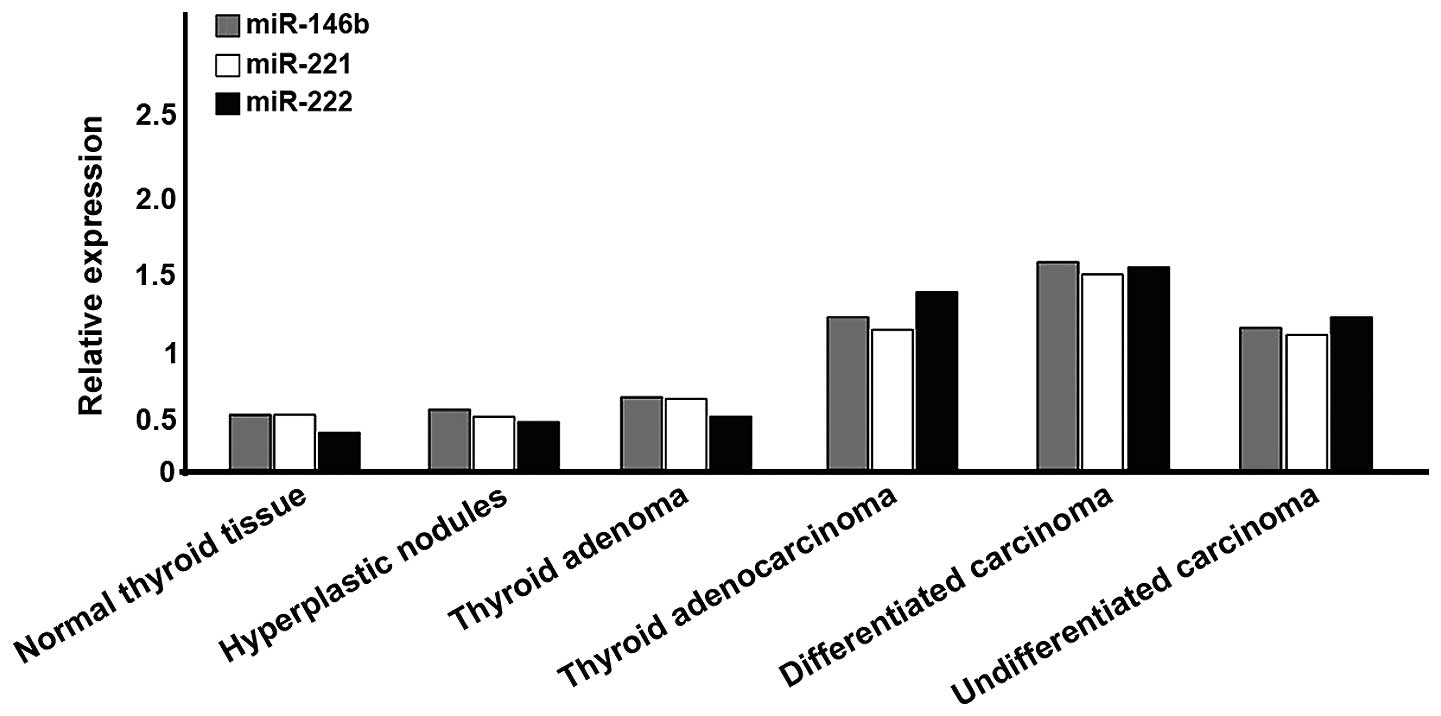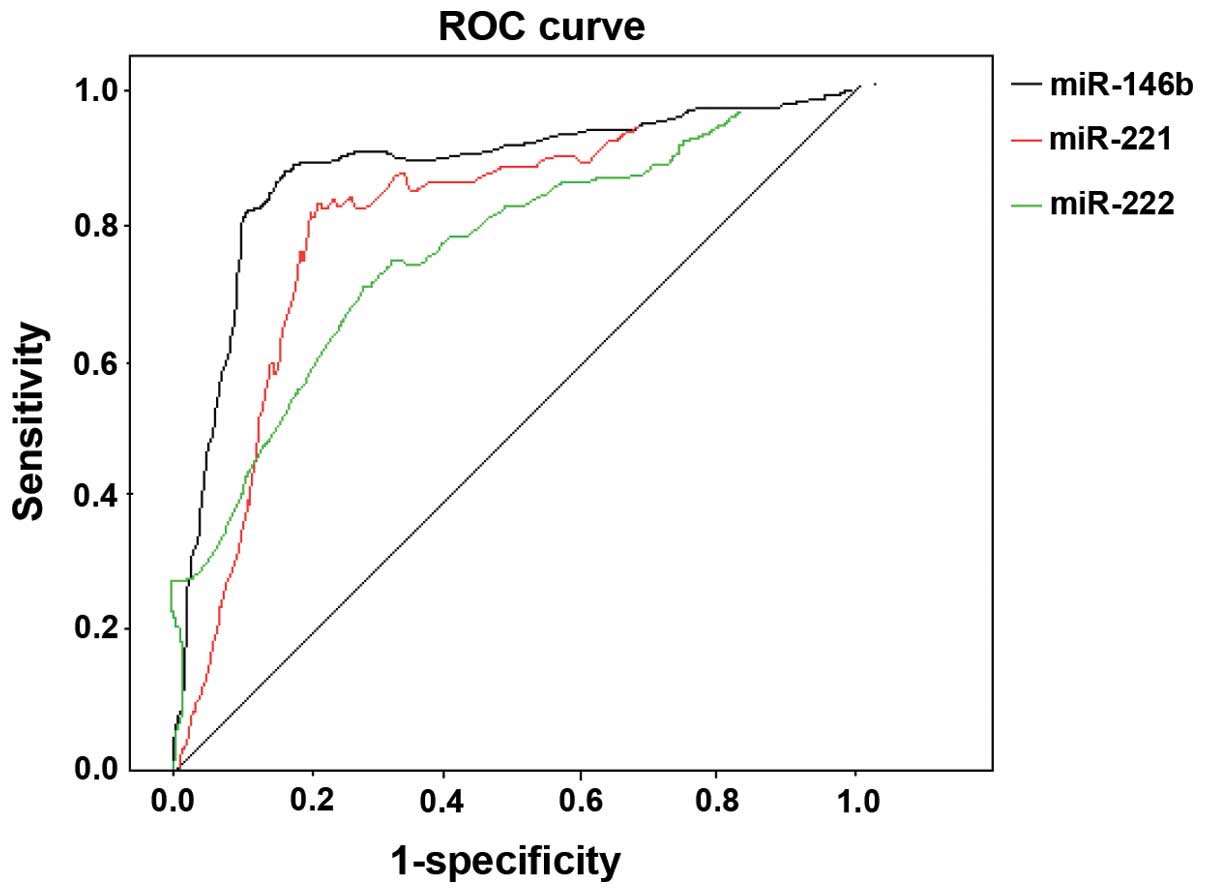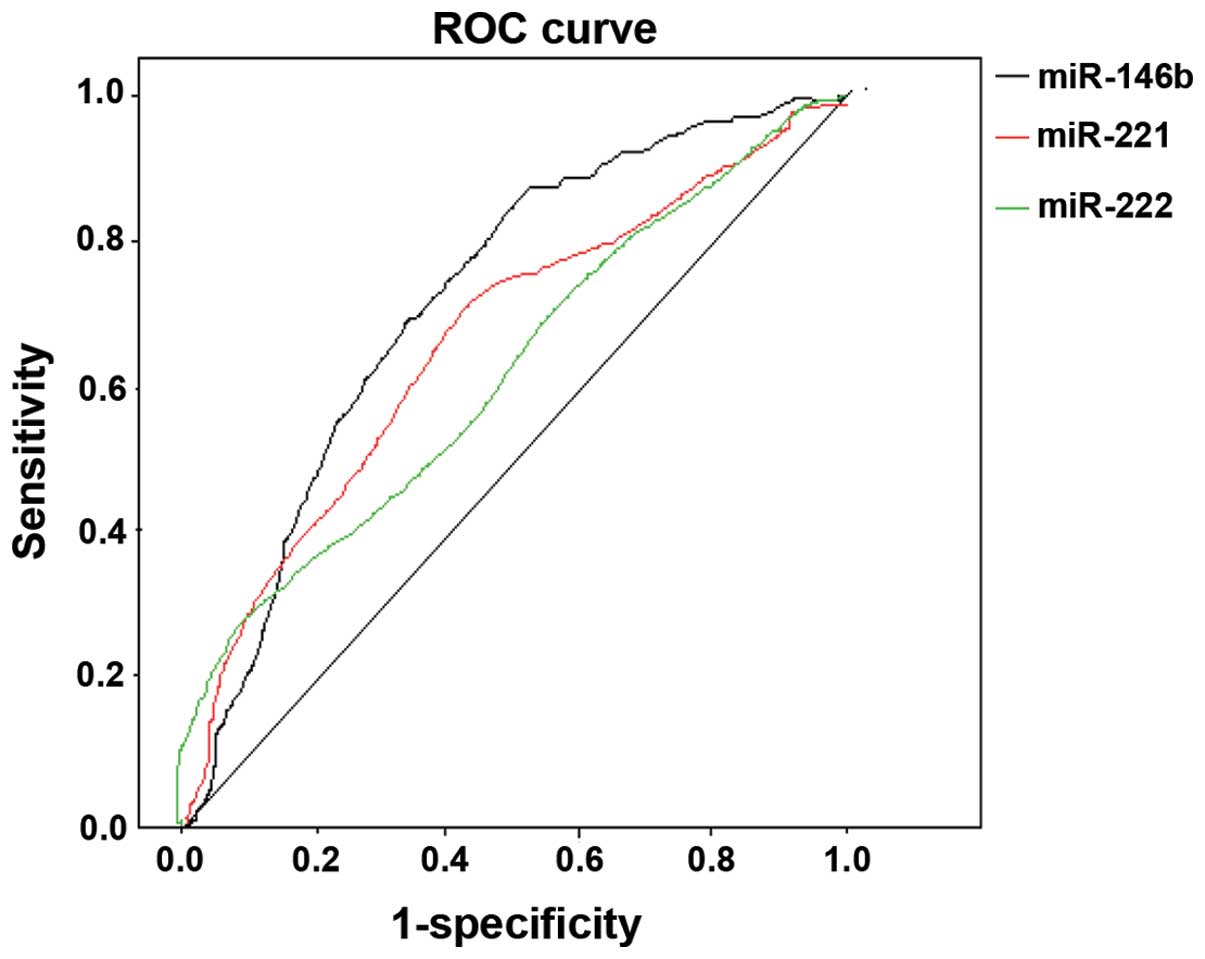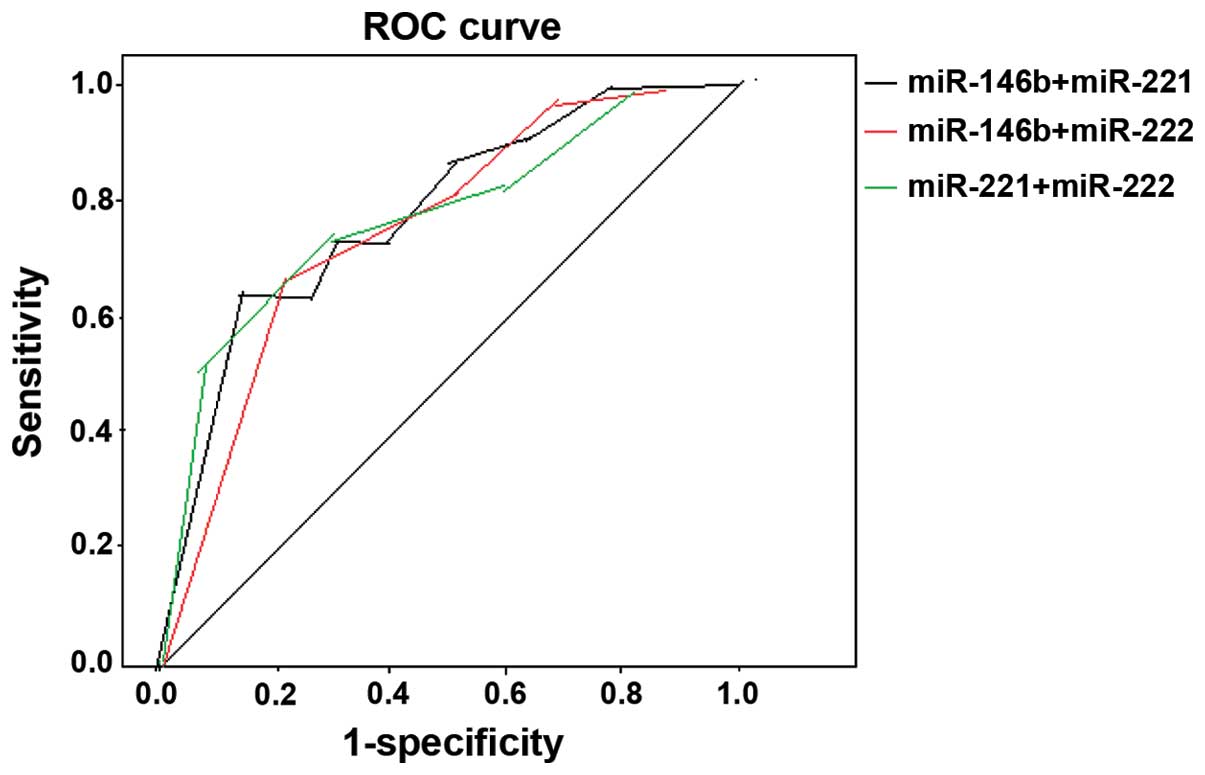Value of distinguishing differentiated thyroid carcinoma by miRNA
- Authors:
- Published online on: May 12, 2016 https://doi.org/10.3892/ol.2016.4557
- Pages: 79-82
-
Copyright: © Xu et al. This is an open access article distributed under the terms of Creative Commons Attribution License.
Metrics: Total
Views: 0 (Spandidos Publications: | PMC Statistics: )
Total PDF Downloads: 0 (Spandidos Publications: | PMC Statistics: )
Abstract
Current methods for diagnosing thyroid carcinoma are time consuming or expensive. Thus, alternative approaches are required. In the present study, microRNAs (miRNAs) with higher sensitivity and specificity were screened while distinguishing between differentiated thyroid carcinoma (DTC) and subtype papillary thyroid carcinoma (PTC). A total of 120 cases suspected of having thyroid carcinoma were selected and examined using clinical color Doppler ultrasound, and computed tomography scan at the same time. The tissue specimens were obtained with fine needle aspiration, multiphase biopsy and surgical resection. The expression of miR146b, miR221 and miR222 was detected uisng the RT‑quantitative polymerase chain reaction method. The receiver operating characteristic curve was used to obtain the cut‑off value. Pathological examination identified 8 cases of normal thyroid tissue; 9 cases of hyperplastic nodules; 12 cases of thyroid adenoma; and 91 cases of thyroid carcinoma, of which 59 cases were DTC, 15 cases were follicular carcinoma and 17 cases were undifferentiated carcinoma. In the thyroid carcinoma, the expression levels of miR146b, miR221 and miR222 were significantly higher than those of other tissues (P<0.05). The expression levels of these miRNAs in the differentiated type were also significantly higher than those in the undifferentiated type (P<0.05). A comparison of the differentiated subunit identified no statistically significant difference (P>0.05). Following diagnosis of DTC, the area under curve (AUC) of miR146b, miR221 and miR222 was 0.832, 0.806 and 0.745, respectively; the cut‑off values were 1.346, 1.213 and 1.425, respectively; susceptibility was 72.8, 71.5 and 68.7%, respectively; and specificity was 62.3, 60.9 and 59.3%, respectively. The AUC of the combined miR‑146b and ‑221 following diagnosis of PTC was 0.695; the cut‑off values were 1.506 and 1.462, respectively; susceptibility was 78.9%; and specificity was 68.5%. The AUC of the combined miR-146b and ‑222 was 0.677; the cut‑off values were 1.523 and 1.443, respectively; susceptibility was 76.3%; and specificity was 66.4%. The AUC of the combined miR‑221 and ‑222 was 0.662; the cut‑off values were 1.564 and 1.437, respectively; susceptibility was 74.9%; and specificity was 68.2%. In conclusion, miR146b, miR221 and miR222 may be used as susceptibility and specificity indices of DTC, although they cannot be used as susceptibility or specificity indices for distinguishing PTC. Combining the two indices together can improve diagnostic accuracy to a certain extent.













